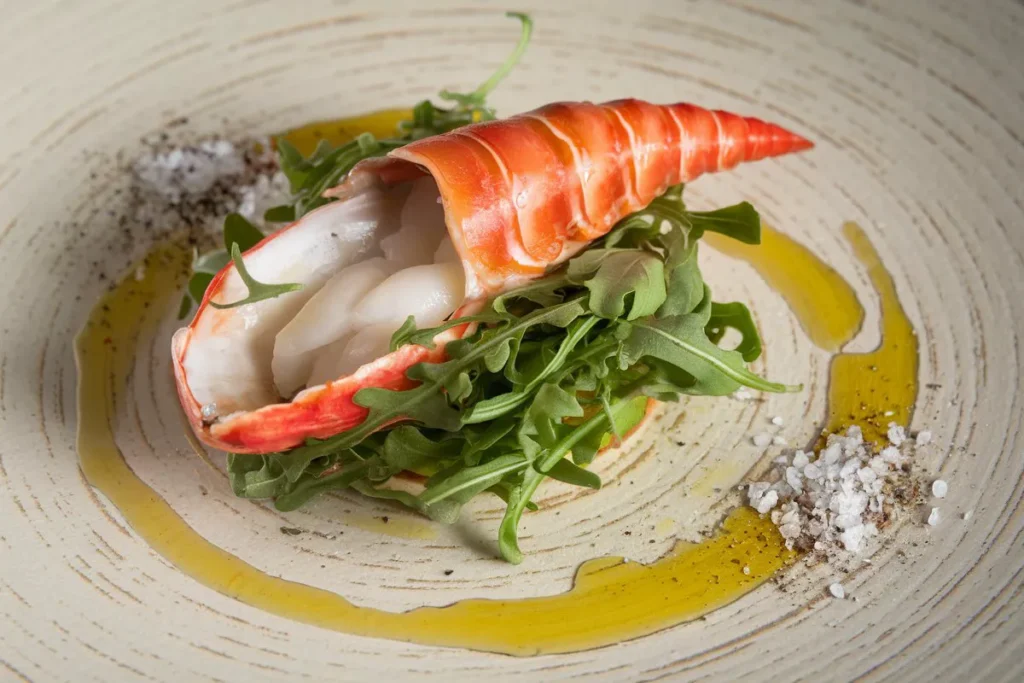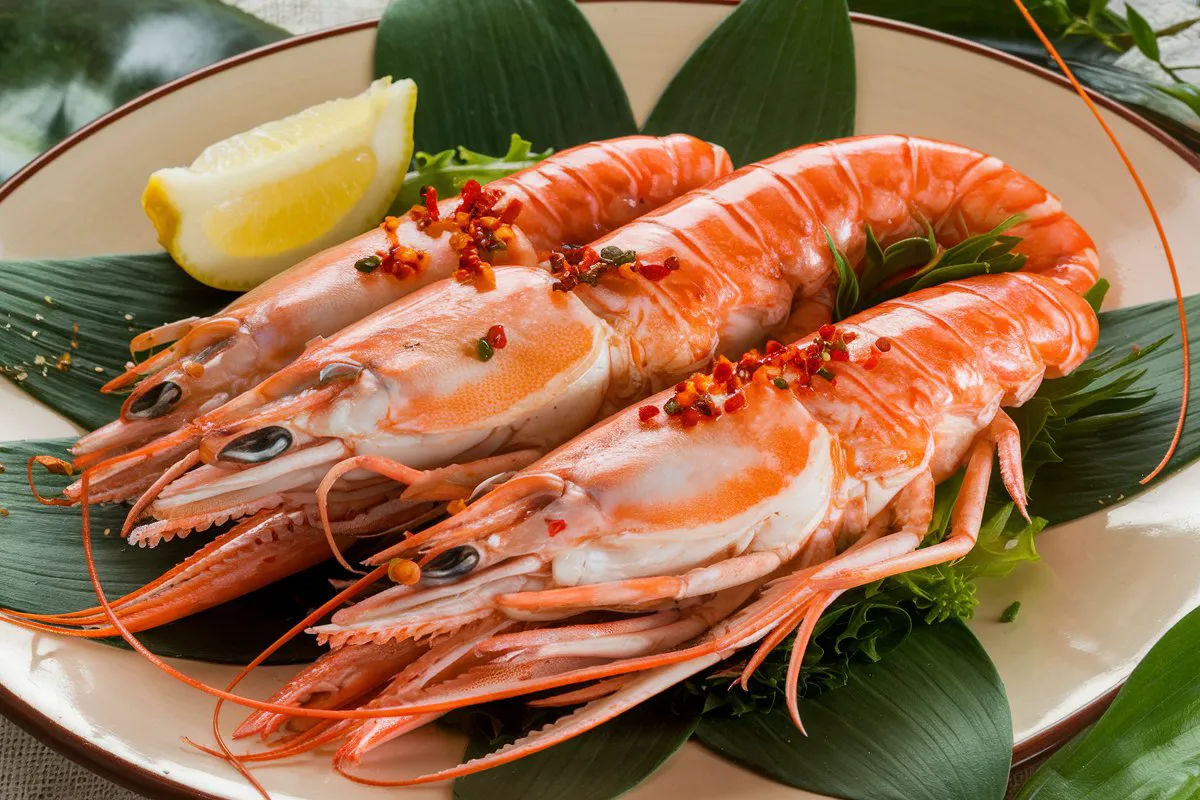If you’re a seafood lover, you’ve likely encountered both lobster and langostino on restaurant menus or in the seafood section at your local grocery store. While lobster has long been considered the pinnacle of luxury in the seafood world, langostino has gained popularity as a versatile, tasty, and more affordable option. But the question on everyone’s mind is: Is langostino cheaper than lobster?
In this blog, we will explore the price difference between langostino and lobster, how they compare in terms of flavor and texture, and why you might want to consider adding langostino to your culinary repertoire. Along the way, we’ll also provide delicious langostino recipes that make the most of its flavor and value.
What Is Langostino?
Before diving into whether langostino is cheaper than lobster, it’s essential to understand what langostino actually is. The term “langostino” can be confusing, as it is used to describe different species in various parts of the world. In the United States, langostino typically refers to the tail meat of a small crustacean from the squat lobster family. Though its name includes “lobster,” it is not a true lobster.
Langostinos are primarily harvested off the coasts of Chile and Peru, and their small size and sweet flavor have made them a popular alternative to traditional lobster. However, it’s not just their flavor that has gained them attention—langostino is often cheaper than lobster, making it a more budget-friendly option for seafood lovers.
Is Langostino Cheaper Than Lobster? The Price Comparison
So, is langostino cheaper than lobster? The short answer is yes. While the exact prices can vary depending on location, season, and availability, langostino is generally more affordable than traditional lobster.
Lobster Prices
Lobster prices tend to fluctuate throughout the year, often depending on demand and the harvesting season. In general, lobster is considered one of the most expensive types of seafood, with prices ranging from $25 to $45 per pound for live lobster. Lobster tails, especially from cold-water species like those from Maine, can be even more expensive. Special occasions like holidays can drive prices higher, making lobster an indulgence reserved for special meals.
Langostino Prices
In contrast, langostino tends to be much more affordable. Langostino is cheaper than lobster, with prices typically ranging between $12 and $20 per pound for frozen, pre-cooked langostino tails. Because langostino is smaller and harvested in larger quantities, it is more accessible in terms of cost. You can often find langostino tails in the frozen section of your local grocery store, making them a convenient and economical option for seafood dishes.
Why Is Langostino Cheaper Than Lobster?
Understanding why langostino is cheaper than lobster requires looking at several factors, including size, availability, and harvesting methods.
1. Size and Yield
Lobsters are much larger than langostinos, and harvesting them involves greater effort, which drives up the price. A single lobster can yield a significant amount of meat, particularly from its tail and claws, which makes it more expensive to source and process. Langostinos, on the other hand, are much smaller, with most of the edible meat coming from their tails. Because they are smaller, langostinos are easier and faster to process, which helps keep costs down.
2. Harvesting and Supply
Lobster fishing is often more labor-intensive and requires specific equipment, such as lobster traps and boats. Lobsters are also subject to strict regulations to prevent overfishing, which can sometimes result in limited availability and higher prices. In contrast, langostinos are harvested in greater numbers, primarily in South America, where they are more abundant. This higher supply makes it easier to meet demand, which helps keep langostino prices lower.
3. Pre-Cooked and Frozen Convenience
Another factor that makes langostino cheaper than lobster is how it is sold. Langostino tails are often sold pre-cooked and frozen, which makes them easier and quicker to prepare. In contrast, live lobster requires special handling, cooking, and preparation, adding to the overall cost. The convenience of frozen langostino also makes it an attractive option for home cooks looking to enjoy seafood without the fuss or high price tag.
Flavor Comparison: Does Price Affect Taste?
While langostino is cheaper than lobster, many wonder if it compares in terms of flavor. Both seafood options have a distinct taste, but they are not identical. Here’s how langostino and lobster differ in flavor and texture.
Langostino Flavor
Langostino is known for its sweet, delicate flavor. Its taste is often compared to a mix of shrimp and lobster, with a milder profile than both. The texture of langostino meat is tender and succulent, but it lacks the firm, dense bite of lobster. This light, sweet flavor makes langostino perfect for dishes that require a more subtle seafood element.
Lobster Flavor
Lobster, on the other hand, is richer and more buttery in flavor. Its meat is firmer and more substantial, especially in the tail and claws. Lobster’s flavor is often described as indulgent, which is why it’s considered a delicacy. The richness of lobster makes it stand out in dishes like lobster bisque or grilled lobster tails with butter sauce.
Is Langostino a Good Substitute for Lobster?
If you’re looking for a more affordable alternative, langostino can be an excellent substitute for lobster in many recipes. While the texture is slightly different, the sweetness and tenderness of langostino work well in dishes that traditionally feature lobster, such as pasta, risotto, and even lobster rolls. Given that langostino is cheaper than lobster, it’s a great way to enjoy seafood flavors without overspending.
Cooking with Langostino: Easy and Affordable Recipes
Now that we know langostino is cheaper than lobster and offers a similar sweet flavor, let’s dive into some delicious recipes that highlight langostino’s unique qualities. These dishes are easy to prepare and perfect for showcasing the flavor of langostino in your home cooking.

Recipe 1: Langostino Scampi with Garlic and Lemon
If you love traditional shrimp scampi, you’ll enjoy this twist on the classic dish using langostino. The delicate sweetness of langostino pairs perfectly with the bright flavors of garlic, lemon, and butter.
Ingredients:
- 1 pound of langostino tails, thawed
- 8 oz of linguine or fettuccine pasta
- 4 tablespoons unsalted butter
- 4 cloves garlic, minced
- Juice of 1 lemon
- ½ cup white wine
- Salt and pepper to taste
- Fresh parsley for garnish
Instructions:
- Cook the Pasta: Bring a large pot of salted water to a boil and cook the pasta according to the package instructions until al dente. Drain and set aside.
- Sauté the Garlic: In a large skillet, melt the butter over medium heat. Add the minced garlic and cook for 1-2 minutes until fragrant.
- Add the Langostino: Stir in the thawed langostino tails and sauté for about 3-4 minutes until heated through.
- Add the Wine and Lemon: Pour in the white wine and lemon juice, and allow the sauce to simmer for a few minutes to reduce slightly. Season with salt and pepper to taste.
- Combine with Pasta: Toss the cooked pasta into the skillet and mix until the noodles are fully coated in the garlic butter sauce.
- Serve: Garnish with fresh parsley and serve immediately.
Recipe 2: Langostino Tacos with Lime Crema
For a lighter, more casual meal, these langostino tacos are a refreshing way to enjoy seafood. The mild sweetness of the langostino is balanced by a zesty lime crema and crunchy slaw.
Ingredients:
- 1 pound of langostino tails, thawed
- 8 small corn tortillas
- 2 cups shredded cabbage
- 1 avocado, sliced
- ½ cup sour cream
- Juice of 2 limes
- 1 tablespoon olive oil
- Salt and pepper to taste
- Fresh cilantro for garnish
Instructions:
- Make the Lime Crema: In a small bowl, mix the sour cream, lime juice, and a pinch of salt. Set aside.
- Sauté the Langostino: Heat the olive oil in a skillet over medium heat. Add the langostino tails and cook for 2-3 minutes until heated through. Season with salt and pepper.
- Assemble the Tacos: Warm the corn tortillas in a dry skillet or microwave. Add a handful of shredded cabbage, a few slices of avocado, and a portion of langostino to each tortilla.
- Top with Crema: Drizzle the lime crema over the tacos and garnish with fresh cilantro. Serve immediately.
Recipe 3: Langostino Risotto
Risotto is a creamy, comforting dish that pairs beautifully with the sweet, tender meat of langostino. This recipe brings out the richness of the langostino without overshadowing its delicate flavor.
Ingredients:
- 1 pound of langostino tails, thawed
- 1 cup Arborio rice
- 4 cups chicken or vegetable broth
- 1 small onion, finely diced
- 3 cloves garlic, minced
- ½ cup white wine
- ½ cup grated Parmesan cheese
- 2 tablespoons butter
- Salt and pepper to taste
- Fresh parsley for garnish
Instructions:
- Sauté the Onion and Garlic: In a large skillet, melt the butter over medium heat. Add the diced onion and minced garlic, and cook until softened, about 4-5 minutes.
- Toast the Rice: Stir in the Arborio rice and cook for 1-2 minutes until lightly toasted.
- Add the Wine: Pour in the white wine and stir until it is fully absorbed by the rice.
- Add the Broth: Begin adding the broth one cup at a time, stirring constantly and allowing each addition to be absorbed before adding more. This process will take about 20 minutes.
- Stir in the Langostino: Once the rice is tender and creamy, stir in the thawed langostino tails. Cook for an additional 3-4 minutes until the langostino is warmed through.
- Finish with Parmesan: Stir in the grated Parmesan cheese and season with salt and pepper to taste.
- Serve: Garnish with fresh parsley and serve immediately.
Conclusion: Is Langostino Cheaper Than Lobster?
To sum it up, langostino is indeed cheaper than lobster, making it a fantastic option for seafood lovers who want to enjoy the sweet, delicate flavors of lobster-like dishes without the hefty price tag. While langostino may not be a true lobster, its versatility and mild sweetness make it a valuable ingredient in the kitchen. Whether you’re preparing a luxurious risotto or a quick weeknight taco, langostino offers a delicious and budget-friendly way to incorporate seafood into your meals.
So, next time you’re looking for a seafood dish that delivers on both flavor and affordability, consider picking up some langostino tails and trying out these tasty recipes.
FAQ
1. Is langostino cheaper than lobster year-round?
Yes, langostino is cheaper than lobster most of the time, though prices for both can fluctuate based on season and availability. Generally, langostino remains a more affordable option.
2. Does langostino taste exactly like lobster?
While langostino is cheaper than lobster, it doesn’t taste exactly the same. Langostino has a sweet, mild flavor similar to lobster but with a softer texture.
3. Can I substitute langostino for lobster in recipes?
Yes, you can substitute langostino for lobster in many recipes. Since langostino is cheaper than lobster, it’s a great way to enjoy seafood dishes without the high cost.
4. Where can I buy langostino?
Langostino is often available in the frozen seafood section of grocery stores or through online seafood retailers. It’s commonly sold pre-cooked and frozen, which adds to its convenience.
5. What’s the best way to cook langostino?
Since langostino is typically sold pre-cooked, it’s best to gently reheat it in sauces or sauté it for a few minutes. Its sweet, delicate flavor pairs well with garlic, butter, and citrus.
